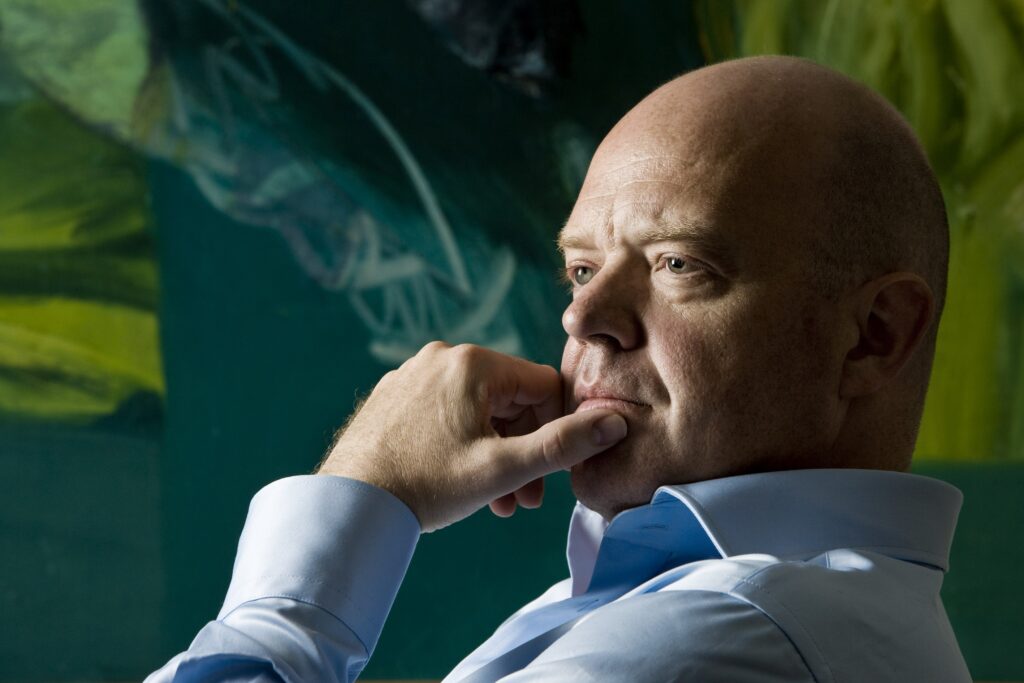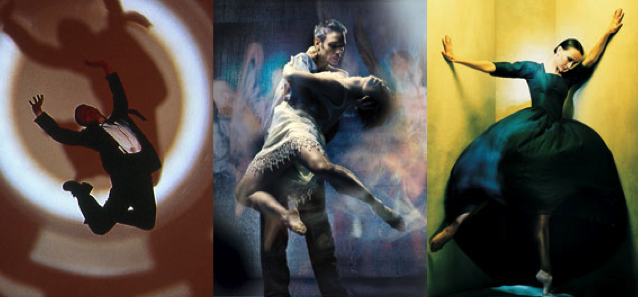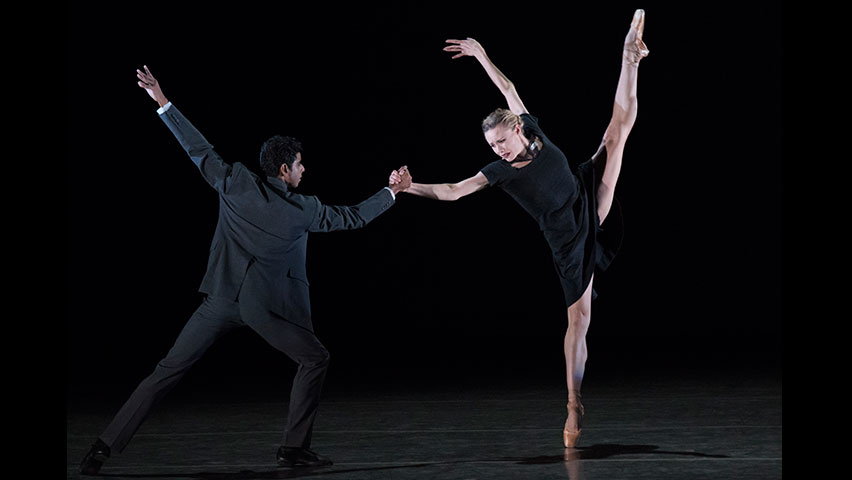
Fresh from winning Britain’s National Dance Award for Best Modern Choreography, Kim Brandstrup discusses his love of dance and film.
Kim Brandstrup picks his words carefully. As carefully, in fact, as he lights upon the telling details that will bring his choreography to life.
It’s to do with his early training in, and continued love of film.
“My way of seeing is through a camera and probably I see close ups, how somebody attacks the music, where the gaze is, that slight hesitation before we move… All those little things are what I look out for.”
“Detail” is one word that recurs in our conversation, whether it focusses on dance and dancers, film, opera or theatre, where the Danish-born choreographer is in great demand.
We talk at London’s Lyric Hammersmith Theatre during a break in rehearsals for the stage adaptation of Paul Auster’s novel City of Glass, for which Kim Brandstrup is Movement Director.
That choreography award, then. It was for his reading of Schönberg’s Transfigured Night for Rambert, a piece which The Guardian described as “superbly constructed, inventively musical, beautiful and profoundly humane.”
And yet, Brandstrup hesitated before taking up the commission.
“I was slightly apprehensive about the music’s emotional expressivity, I thought it may be hard to match. There are so many layers in it…
“But then I always found when you give yourself to these masterpieces suddenly they yield something completely unexpected. And it certainly did.”
He was uncertain, too, about the 19th century poem that inspired Schönberg.
“This woman who’s pregnant but she is terrified of telling her partner that it’s another man’s [child], but miraculously this man totally forgives her. And of course, I can see that being a beautiful idea at that time, but now it seems a little bit idealised.
“I think my take on it was (…) to try to find out the cost of that narrative, that it must not have been easy to forget, there must have been lack of trust, unfaithfulness.”
His narrative is, therefore, ambiguous; or, more precisely, the end…
“… is not completely transfigured.”
This commission from Rambert Director Mark Baldwin was special for Brandstrup for another reason:
“For the past ten years I’ve been working almost exclusively with ballet dancers. There’s something in that re-encounter with contemporary dancers that made it possible. I thought it was interesting to explore this territory with a contemporary language.”
Contemporary dance is where Brandstrup first developed his unique choreography. He moved to London in the late 1970s to study dance after obtaining a film degree by the University of Copenhagen, and took class at The Place – “where at that time they had formidable teachers” – before setting up his own company, ARC, in the 1980s.
“At that particular time, 80s and 90s, narrative work in contemporary dance was practically non-existent (…) And I wanted to explore that. And, of course, all those narrative works were much more related to my film training. At that time it was only through having my own company that I could do those experiments.”

A narrative thread runs through all of Brandstrup’s works.
“My way of watching dancers is always to say, where did they come from, where do they go now (…) Whatever somebody does will embody a kind of intent, and that’s what I’m sensitive to and what I look for – it’s that strange kind of poignancy and alertness of going or being on the move.”
“Coming out of the past and projecting into the future” through movement and stage presence, or “tridimensionality” as he calls it, is what Brandstrup looks for in dancers. Favourite interpreters include Irek Muhamedov, Zenaida Yanowsky and Alina Cojucaru, on all of whom he’s created work. And since 2015 Sara Mearns, New York City Ballet principal.
A question about Mearns yields the first moment when words fail Brandstrup.
“ Well, Sara…. I just saw her…. and I mean, what can I say? …. She’s a theatrical being, who lives on stage; there’s a tridimensionality to her presence that is fantastic. And she’s fearless!”
They came together when Brandstrup was invited by the NYCB Artistic Director, fellow Dane Peter Martins, to choreograph Jeux on Debussy’s score.

“We think that Balanchine is the great purist of form, abstract, that it’s the technique and the music that guides it rather than the narrative; but, of course, what we sometimes forget is that they also have Robbins, and that made me think I could tap into that vein.
“I had a great time there and I was astonished at how quick they were. You had to step up your game; and they would give you something at the end of each period.
“You’d get half-an-hour for a solo, you’d get an hour for duets and you’d get, if you were lucky, an hour-and-a-half for full corps. But even at the end of half-an-hour calls somebody would perform something for you, so it made the whole process very quick and very playful.”
The dancers, too, relished the novel experience. Sara Mearns was quoted was saying she found the whole process “liberating:”
“We realised, we are out of our comfort zone, but we are really free. He is directing us, but he will let us go where we want with the movement.”
I’m beginning to get the essence of what makes a Kim Brandstrup work. A narrative thread. Powerful, though understated feeling expressed through movement, rather than “histrionics” (“if you start pulling faces, you really lose your audience”), immersion in the score. And, of course, “detail.”
That’s why he so enjoys working with the Danish Royal Ballet, for whom last Spring he created a full length work, Shaken Mirror (Rystet spejl) – his fifth for the company.

“Looking across the ballet landscape there is great subtlety in the Danish tradition. I suppose because it was a small theatre and it preserved that quality of detail in the dancing and especially in the mime that I felt I could tap into.
“Also, I think it’s very important that the mime and the acting is never detached from the music, I mean, it was part of the choreographic fabric.”
Shaken Mirror takes its inspiration from the poetry of Brandstrup’s friend and contemporary, Søren Ulrik Thomsens. Here, too, he hesitated before plunging in- “I am always reluctant!” – but finally took the poetry as a starting point for a reflection – a shaken mirror – on a myriad of relationships between men and women.
As in all of Brandstrup’s works we are left with a sense of yearning, a suspended breath.
“Things change, disappear and you remember them and you try and hold them. (…) Choreography is a way of trying to pin down a moment, to recreate it… but of course, it will go away… I mean, it’s not necessarily sad, it’s just how it is.”
Having just celebrated a “significant birthday” Kim Brandstrup is on a roll: last October, an award from Denmark’s Wilhelm Hansen Foundation joined a growing collection that includes an Olivier and an Evening Standard Award, marking particular stages in a considerable body of work.
He has a major dance project underway for 2017, but so far we’re sworn to secrecy; NYCB are reprising Jeux in the Spring; Britten’s opera Billy Budd, on which he worked with Director Deborah Warner in Madrid last year, is embarking on an extensive tour; and he’s going back to his first love, film.
The film of Brandstrup’s Leda and the Swan, created in 2014 for Britain’s Royal Ballet, received critical acclaim. Now he’s putting the finishing touches to another film.
“I’ve done what I call three small portraits of three dancers. It’s basically them listening, marking and doing a few phrases of something that I keep track of very closely. I’m editing at the moment. It’s exciting and I managed to get Carlos [Acosta], Alina [Cojucaru] and Zen [Yanowsky] to do it.
And, of course, what he is trying to grasp “is the detail of what the dancers do.”
In the end, Brandstrup feels, detail is what keeps the audience watching:
“You’ve got to create a particular kind of concentration and emphatic watching of the detail in the audience. They have to lean forward and say, ‘what is this? what is it?’ (…) I feel less is more and you mustn’t lose the depth of the image and the depth of movement.”
Teresa Guerreiro
E N D
